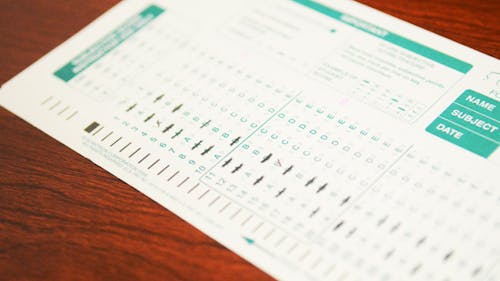Faculty members analyze PARCC standardized test

While it is no secret that many teachers, students and parents dislike student testing, University professors are now discussing the ramifications of the latest standardized test implemented in the Garden State.
Following the New Jersey State Assembly’s unanimous March 26 vote to allow students to opt out of the Partnership for Assessment of Readiness for College and Careers (PARCC) standardized test, University professors are now shedding light on the controversial examination.
The new exam was developed by PARCC and the private-sector publishing company Pearson earlier this year in 12 states including New Jersey, and was distributed to all public school children in third grade through 11thgrade, according to a Feb. 13 article on MyCentralJersey.com.
The new PARCC test outraged many parents of New Jersey school children because it can impact how students learn in the classroom setting, said William Firestone, a professor in the Department of Educational Theory, Policy and Administration at Rutgers Graduate School of Education.
“One of the things standardized tests do is influence the way teachers teach,” he said. “One of the problems in the past with multiple choice tests is that they only encourage testing for recall.”
The New Jersey Department of Education has wanted a redesign of standardized assessments for over a decade, and was planning on implementing one with the new PARCC exam, Firestone said.
Instead of teaching students to only memorize information during class, PARCC wanted to guide teachers toward developing student problem-solving skills, he said.
PARCC is supposed to test student knowledge of the New Jersey Core Curriculum Content Standards, Firestone said.
The standards include 21st Century Life and Careers, Comprehensive Health and Physical Education, Science, Social Studies, Technology, Visual and Performing Arts and World Languages, according to the State Department of Education's website.
“Districts and states haven’t quite known how to realign what they’re teaching to fit the new standards, and they’ve gotten poor guidance,” he said. “It takes more than just a change in the test to change the way teachers teach.”
The PARCC test is detrimental to student learning because educators feel forced to teach lessons with the purpose of ensuring students pass, said Julia Sass Rubin, an associate professor in the Edward J. Bloustein School of Planning and Public Policy.
“This is just the latest iteration of … what high-stakes standardized tests are doing to public education,” she said. “They’re leading to a narrowing of the curriculum, they’re leading to teaching to the test … because the test has such high consequences.”
Although PARCC cut scores are due to be set this summer, both PARCC and the Smarter Balanced Assessment Consortium (SBAC) plan to peg their scores to the National Assessment of Educational Progress (NAEP) proficiency level, Rubin said.
If the PARCC cut scores are pegged to the NAEP exam, only about 40 percent of students will be considered college and career proficient. NAEP proficient is a very high standard, akin to a "solid A" student, she said.
PARCC hurts student learning because the implications of student test scores encourages teachers to emphasize proficiency in language arts and mathematics and focus less on subjects such as science, social studies and the arts, Rubin said.
“The focus is so overwhelmingly on passing these tests that they create this very negative incentive system,” she said. “Things that aren’t related to the test get dropped or deemphasized, so schools eliminate … anything that isn’t about passing the test.”
Several studies have shown that standardized tests, such as the PARCC exam, are not effective in standardizing student education levels in an economically unbiased fashion, Rubin said.
Test scores rise with household income, she said. Children from families earning $20,000 or less per year will have a 400-point differential on the SAT on average versus children from families earning $200,000 or more.
A volunteer for Save Our Schools NJ, Rubin said one of her primary concerns is how certain members of the public believe the exam quantifies something meaningful.
“I think the other problem with this is that it presumes the test actually measures something worth measuring,” she said. “What we know from years and years of test results is that standardized tests reflect the income and educational background of the families of students.”
Standardized tests such as the PARCC exam facilitate widening income gaps and social inequality because the test results are used to make decisions about students, teachers and public schools that penalize students from low-income families, Rubin said.
For example, Chicago mayor Rahm Emanuel closed 50 schools in predominantly low-income Black communities against community wishes, based in part on standardized test scores, she said.
“When you make those decisions on the basis of (a standardized) test, what you’re doing is creating this set of perverse incentives,” Rubin said. “What it’s doing is destroying public education and hurting our kids.”
Dan Corey is a Rutgers Business School first-year student majoring in pre-business and journalism and media studies. He is an Associate News Editor at The Daily Targum. Follow him on Twitter @_dancorey for more stories.
Editor's Note: This article has been edited for clarity.



